Introduction to Operating Systems
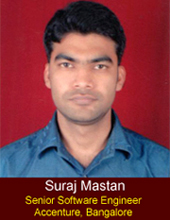
This communication mode is a called as program, is a set of instructions aligned in an order to instruct hardware to perform a specific task, termed as a. The programming language translates user written the program in to machine language and then this set of programs as a one is termed as a ‘software’. The application software which acts as intermediary source that takes the request from the end user/ application software to be executed by the computer hardware called as system software.System software can be categorized in to two types: operating systems and utility software.
Difference between system software and application software
Most often confuse between system software and application software, the difference are stated in the table below:
| System Software | Application Software |
| Installed when the operating system is installed on the computer | Installed as per the userrequirements |
| includes programs such as compilers, debuggers, drivers, assemblers | Includes media players, word processors, and spreadsheet programs. |
| Users cant directly interact with the system software | Whereas user interacts gets his tasks done directly interacting with application software |
| It works background | It works on foreground and interacts with the system software for few tasks to be executed |
| A computer may not require more than one type of system software | while there may be a number of application software programs installed on the computer at the same time |
| System software runs independently | Application software can’t run independent instead needs the coordination of system software |
| Can directly interact with the computer hardware | Cant interact with the computer hardware |
Definition: An Operating system is a program that controls the execution of application programs and acts as an interface between the user of a computer and the computer hardware.
The utility software role is to analyze, configure, optimize and maintain the computer, such as virus protection and malicious attacks.

Figure: operating system in computer system hierarchy
Examples of Operating Systems
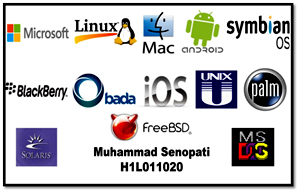
History of Operating Systems
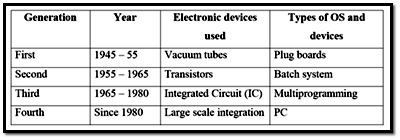
Comparison of various Operating systems
The below Figure indicates the relationships among the various timesharing operating systems. Operating Systems in dark boxes are in use.
Solid arrows indicate strong design influence (e.g., a later system with an API deliberately reverse-engineered to match an earlier one). Dashed lines indicate significant design influence. Dotted lines indicate weak design influence. Not all the genetic relationships are acknowledged by the developers; indeed, some have been officially denied for legal or corporate-strategy reasons but are open secrets in the industry.
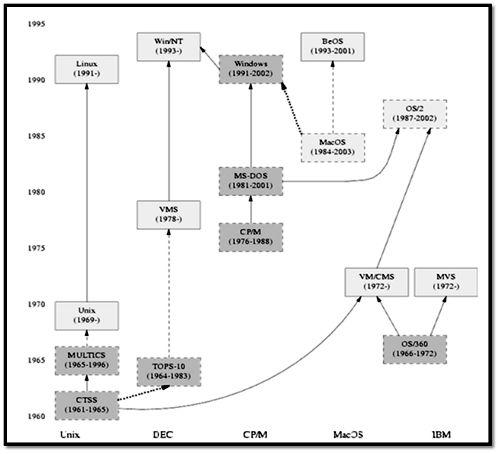
Functions of operating systems
Following are some of important functions of an operating System.
- Memory Management
- Processor Management
- Device Management
- File Management
- Security
- Control over system performance
- Job accounting
- Error detecting aids
- Coordination between other software and users
Shell:
Acts as an interface between Communicates with users either by Text based or Graphical user interface (GUI)
Kernel:
As per the classical definition the kernel is a computer program that manages input/output requests from software, and translates them into data processing instructions for the central processing unit and other electronic components of a computer.
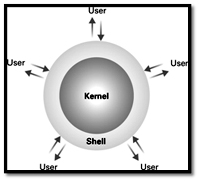 Kernel performs basic required functions:
Kernel performs basic required functions:- File manager
- Device drivers
- Memory manager
- Process manager (Scheduler, dispatcher, etc..)
The functionality of the file manager is to coordinate the use of machine’s mass storage facilities with the user, so as facilitate data organizational issues like bundle of files and other directories (subdirectories), access/operations to files is provided by file manager via a file descriptor. Folders or files will be displayed in the hierarchical tree based on their directory structure
Device Manager
Device manager ensures the communication with various the devices connected to the computer system via their respective drivers. Operating System does the following activities for device management.
- Keeps tracks of all devices. Program responsible for this task is known as the I/O controller.
- Decides which process gets the device when and for how much time.
- Allocates the device in the efficient way.
- De-allocates devices.
The Memory manager heads the task of coordinating the use of main memory operations like allocates/deallocates space in main memory. When the total required memory space exceeds the physical available space then the data blocks are shifted back and forth between the main memory and mass storage. In short Memory manager ensure the following tasks:
- Keeps tracks of processor and status of process. Program responsible for this task is known as traffic controller.
- Allocates the processor (CPU) to a process.
- De-allocates processor when processor is no longer required.
The process manager does the job of process management, like allocation of resources to the processes, enable processes to share and exchange information, protect the resources of each process from other processes and enable synchronization among processes. This processor manager allocates/ deallocates CPU time the process based on their priority, this process can be termed as process scheduling.
Process manager comprises of two components for its successful handling of its job:
- Dispatcher: It performs “process switch” procedure to switch from one process to another, which may be due to process priority or one may process require another process as a part of its execution.
- Scheduler: This part of kernel is responsible for allocation/de-allocation ofprocess to the CPU. Also uphold the record of all processes through a mechanism termed as “process table.
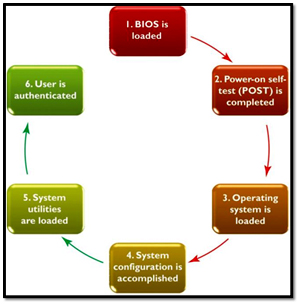
Step1:
- Loads BIOS (Basic Input/Output System) instructions into memory
- BIOS allows computer to accept keyboard input and show information on the monitor
- BIOS is usually stored on a ROM chip.
- Performs power-on self-test (POST), where it confirms that both the computer and its peripheral devices are in condition.
BIOS loads the kernel into memory, where kernel is the heart of operating system. With this step BIOS transfers the control of the computer system to the Operating system.
Step 4:
After gaining control the OS conducts system configuration check for device drivers, means through which OS to interact with the peripherals.
Step 5:
Once step4 is done successfully, and then loads the utility applications like Antivirus software, Speaker volume control, etc.
Step 6:
Now Authenticate of users will be done, only if in any case any authentication process like username and password exists.
Step 7:






